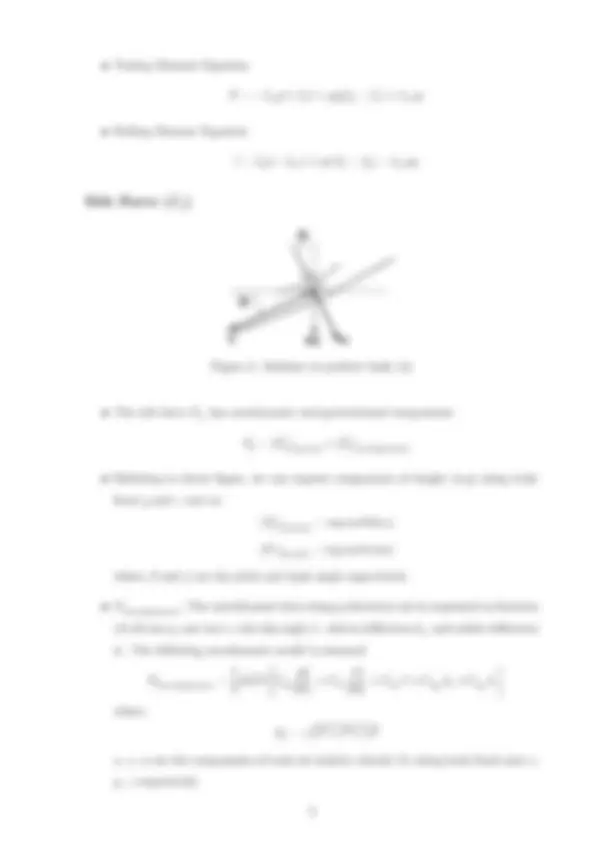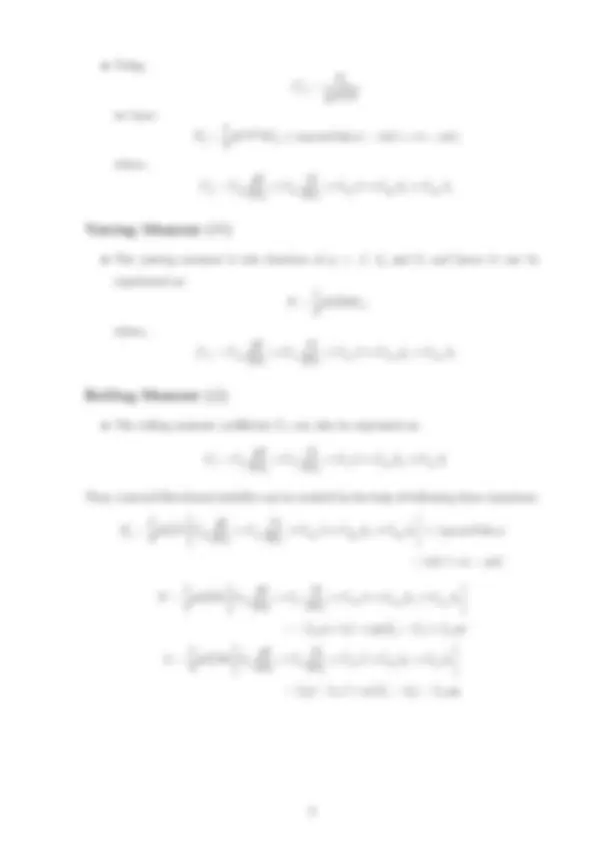Download lateral dyanamics stability and more Essays (university) Space Flight Mechanics in PDF only on Docsity!
Module-
Lecture-
Lateral and Directional Aerodynamic Model
Aerodynamic model: lateral and directional
- First, there are two moment equations and one force equation and the moment equations are coupled kinematically through the product of inertia as well as aero- dynamically.
- Second, the lateral mode (roll) has no inherent static stability; no aerodynamic restoring moment is generated directly by rolling. Rather, a secondary moment is generated through the directional axis due to sideslip and dihedral effect becomes the dominant factor.
- Third, the controls used to produce moments about either of the axes also produce moment about the other.
- Aileron deflection produces yawing moments and the rudder produces significant rolling moment.
- In spite of these three facts, it is still instructive to measure the static directional stability and the dihedral effect through steady state tests and to quantify the control authorities about the x and z axes with steady state maneuvers.
- These steady state test methods are discussed in the following sections. For this in- troduction to static lateral-directional flight test methods, it is sufficient to represent the equations of motion as described below
- We will be referring to the usual body axis system as presented in Figure 1 for future reference
xb
yb
c.g.
Figure 1: Body fixed axis system
- Force Equation Fy = m( ˙v + ru − pw)
- Using, Cy = 1 Fy 2 ρV^ T^2 S we have: Fy =^12 ρV T 2 SCy + mg cos θ sin φ = m( ˙v + ru − pw) where, Cy = Cyp 2 pbVT + Cyr 2 rbVT + Cyβ β + Cyδa δa + Cyδr δr
Yawing Moment (N )
- The yawing moment is also function of p, r, β, δa and δr and hence it can be experessed as: N =^12 ρV (^) T^2 SbCn where, Cn = Cnp 2 pbVT + Cnr 2 rbVT + Cnβ β + Cnδa δa + Cnδr δr
Rolling Moment (L)
- The rolling moment coefficient Cl, can also be expressed as:
Cl = Clp 2 pbVT + Clr 2 rbVT + Clβ β + Clδa δa + Clδr δr
Thus, Lateral-Directional stability can be studied by the help of following three equations:
Fy =^12 ρV (^) T^2 S
[
Cyp 2 pbVT + Cyr 2 rbVT + Cyβ β + Cyδa δa + Cyδr δr
]
- mg cos θ sin φ = m( ˙v + ru − pw)
N =^12 ρV (^) T^2 Sb
[
Cnp 2 pbVT + Cnr 2 rbVT + Cnβ β + Cnδa δa + Cnδr δr
]
= −Ixz p˙ + Ix r˙ + pq(Iy − Iz ) + Ixz qr L =^12 ρV (^) T^2 Sb
[
Clp 2 pbVT + Clr 2 rbVT + Clβ β + Clδa δa + Clδr δr
]
= Ix p˙ − Ixz r˙ + qr(Ix − Iy) − Ixz pq












